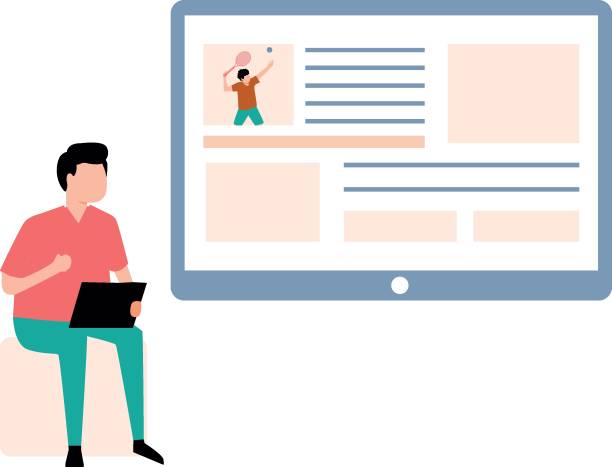Introduction to the Importance of On-Page SEO

In today’s highly competitive world, a strong online presence is vital for any business.
One of the most important pillars of success in the digital space is #On_Page_SEO or On-Page SEO.
On-Page SEO refers to a set of techniques and actions performed within your website to improve its ranking in #search_engine results like Google.
These actions include optimizing content, site structure, keywords, and user experience.
The main goal of On-Page SEO is to help search engines better understand your content and recognize its value.
Correct understanding and precise implementation of On-Page SEO principles not only increase visibility and organic traffic but also provide a better user experience.
This educational and comprehensive approach is the foundation of any successful SEO strategy.
Without a strong foundation in On-Page SEO, even the best off-page SEO strategies may not yield the desired results.
Therefore, investing time and effort in learning and correctly implementing these principles is an essential step for any website seeking sustainable success in search results.
This is an ongoing process that requires updating and adapting to new Google algorithms.
Does your company’s website create a professional and lasting first impression in the minds of potential customers? Rasawob, with its professional corporate website design, not only represents your brand’s credibility but also opens a path for your business growth.
✅ Create a powerful and reliable brand image
✅ Attract target customers and increase sales
⚡ Get Free Consultation
Targeted Keyword Research for On-Page SEO
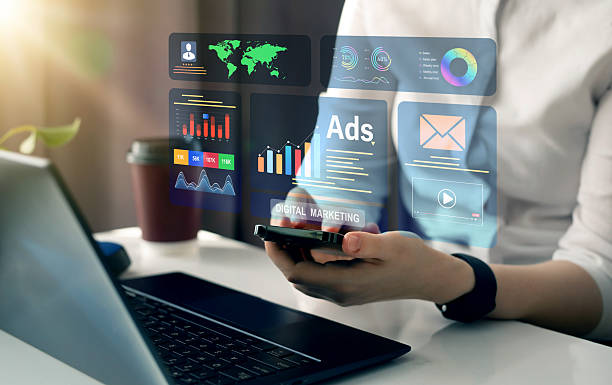
Keyword research is the cornerstone of any successful On-Page SEO strategy.
This process helps you understand exactly what your target audience is looking for and what phrases they use to search for it.
Choosing the right keywords means selecting words that have both a good search volume and reasonable competition.
For efficient On-Page SEO, you should look for keywords with specific search intent (transactional, informational, navigational, commercial investigation).
Various tools such as Google Keyword Planner, Ahrefs, SEMrush, and KWFinder can assist you in this journey.
Don’t forget that long-tail keywords (which consist of three or more words) often have higher conversion rates and less competition, which is an excellent opportunity to improve your pages’ On-Page SEO.
After identifying keywords, you should use them naturally and purposefully in your page’s content, title tags, meta descriptions, and headings.
This explanatory and comprehensive section ensures that your content is correctly identified by users and search engines and placed in an appropriate position.
This requires deep market analysis and understanding audience needs.
Content Optimization: Vital Factors in On-Page SEO
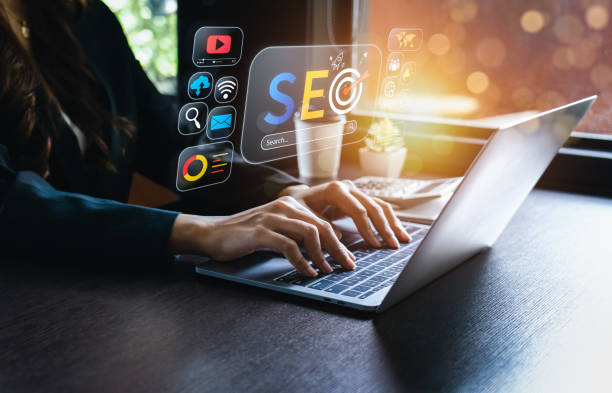
Content is king; this statement rings truer than ever in the world of On-Page SEO.
After keyword research, the next step is creating high-quality, relevant, and comprehensive content that answers user questions and addresses their needs.
Content optimization for On-Page SEO includes proper use of primary and secondary keywords throughout the text, using appropriate headings (H1, H2, H3, etc.) to structure content, and ensuring text readability and appeal.
Your content should be deep and valuable, providing enough information so that the user is not forced to leave your page to find other answers.
This is a specialized look at how to produce content.
Another key aspect is ensuring the freshness and up-to-dateness of content.
Search engines give special importance to content that is regularly updated.
Also, using visual elements like images and videos can increase the appeal of your content and improve the user experience, which indirectly affects On-Page SEO.
Below, a table of important content elements and their impact on On-Page SEO is provided:
| Content Element | Importance for On-Page SEO | Optimization Tips |
|---|---|---|
| Title Tag | Very high; first thing seen in search results and affects CTR. | Includes main keyword; engaging and max 60 characters. |
| Meta Description | Does not directly affect ranking but increases CTR. | An engaging summary of content; includes keyword; max 155 characters. |
| Headings (H1-H6) | Structuring content and improving readability; helps search engine understand the topic. | H1 includes main keyword; logical and hierarchical use of H2-H6. |
| Keyword Density | Should be natural; too much leads to Keyword Stuffing. | Natural and scattered use of main keywords and synonyms. |
| Content Readability | Affects user experience and time spent on page. | Use short sentences, small paragraphs, lists, and images. |
Improving URL Structure and Internal Links

Your site’s URL structure and the use of internal links are two other important factors in On-Page SEO.
Optimized URLs should be short, descriptive, and include relevant keywords.
This not only helps search engines better understand the page’s topic but is also clearer and more understandable for users.
Avoid special characters and long IDs in your URL and use hyphens (-) instead of underscores (_) to separate words.
Internal linking is equally important.
Internal links allow you to connect different pages of your site to each other, which has several benefits for On-Page SEO.
Firstly, it helps search engines understand your site’s structure and crawl and index your pages more easily.
Secondly, it distributes Page Authority throughout your site, and thirdly, it improves the user experience by providing easier navigation paths.
Using descriptive and relevant anchor texts in internal links significantly increases their SEO value.
This is a practical guide for improving site navigation.
Make sure that internal links point to pages with relevant and valuable content to help both search engines and users explore your site more deeply.
Did you know that customers’ first impression of your company is your website? With a powerful corporate website from Rasawob, multiply your business’s credibility!
✅ Custom and visually appealing design tailored to your brand
✅ Improve user experience and increase customer acquisition
⚡ Get Free Consultation!
The Role of Images and Videos in On-Page SEO

Today, visual content is an inseparable part of user experience and On-Page SEO optimization.
Images and videos not only make your content more engaging but can also help attract more traffic through image and video search.
To optimize images, always use the Alt tag (alternative text).
This tag should be descriptive and include relevant keywords so that search engines can understand the image’s content.
Also, optimize image file sizes to avoid slowing down page load speed; use modern formats like WebP and compress images.
For videos, in addition to optimizing the file and hosting (e.g., on platforms like YouTube and then embedding), use video Schema Markup so that search engines can obtain more precise information about your video content.
Also, create transcripts or subtitles for videos to both increase content accessibility and provide more keywords for search engine crawling.
These actions not only help On-Page SEO but can also make your content more entertaining and user-friendly.
Remember that high-quality images and videos can significantly increase user engagement rates and time spent on the page, which are positive ranking factors.
The Importance of Page Load Speed and User Experience
![]()
Page load speed and User Experience (UX) are two very important factors in On-Page SEO that Google gives special importance to.
A website with high load speed not only provides a better user experience but can also help improve the site’s ranking in search results.
Today’s users are accustomed to high speed, and if your website is slow, they will likely leave it.
This increased bounce rate signals to search engines that your page is not engaging for users and may lead to a rank decrease.
To improve load speed, you can use methods such as image compression, caching, minimizing CSS and JavaScript codes, and using a CDN (Content Delivery Network).
On the other hand, user experience also includes responsive design for correct display on all devices, easy navigation, and engaging content.
Google has increased its emphasis on the importance of user experience by introducing metrics such as Core Web Vitals (including Largest Contentful Paint, First Input Delay, Cumulative Layout Shift).
On-Page SEO that focuses on UX shows search engines that your website provides real value to users.
This is an analytical look at site performance that can improve your ranking.
Improving these factors means investing in user satisfaction, which will ultimately benefit your site’s SEO.
Meta Tags and Descriptions in On-Page SEO
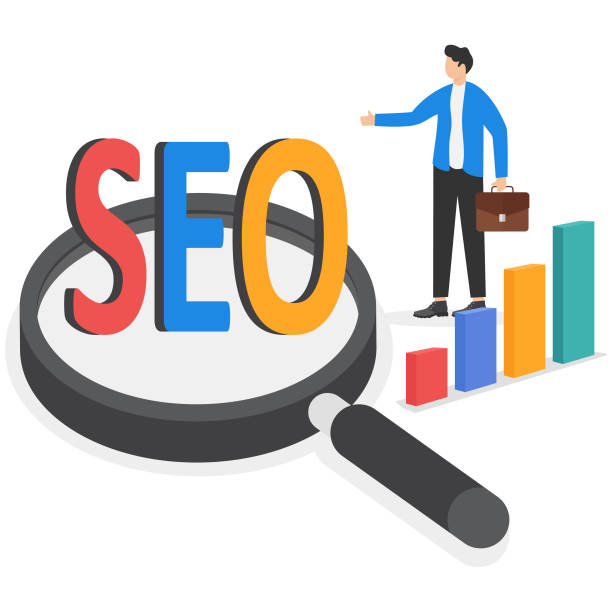
Meta tags and meta descriptions, although they may not be directly displayed in the visible content of the page, play a vital role in On-Page SEO and how your site appears in search results.
The Title Tag is the most important meta element.
This tag is not only displayed at the top of the browser but also appears as the main title of your page in Search Engine Results Pages (SERP).
Optimizing the title tag by including the main keyword at its beginning and creating an attractive and compelling title that is less than 60 characters is essential for increasing the click-through rate (CTR).
The Meta Description is a brief summary of your page’s content displayed below the title in the SERP.
Although Google has stated that meta descriptions are not a direct ranking factor, an engaging meta description can entice users to click on your link, thereby increasing CTR, which indirectly has a positive impact on On-Page SEO.
Meta descriptions should include relevant keywords and be a complete sentence or a short summary of up to 155 characters.
This section might be question-provoking regarding why Google doesn’t directly emphasize it, but its indirect impact on engaging content and attracting clicks is crucial.
Additionally, using Schema Markup can also help search engines better understand your content and display it in a richer way in search results (e.g., Rich Snippets), which is a significant advancement in On-Page SEO.
| Meta Tag | Role in On-Page SEO | Best Practice |
|---|---|---|
| Title Tag | Determines page title in SERP and browser tab, strong ranking factor. | Includes primary keyword (preferably at the beginning), engaging, less than 60 characters. |
| Meta Description | Content summary in SERP, indirect impact on CTR. | Engaging, includes keywords, encourages clicks, about 155 characters. |
| Meta Robots | Instructions for search engines to crawl and index. | `index, follow` for most pages; `noindex, nofollow` for specific pages. |
| Meta Viewport | Controls how the page is displayed on different devices. | Essential for responsiveness and mobile-friendliness. |
Fixing Common On-Page SEO Errors
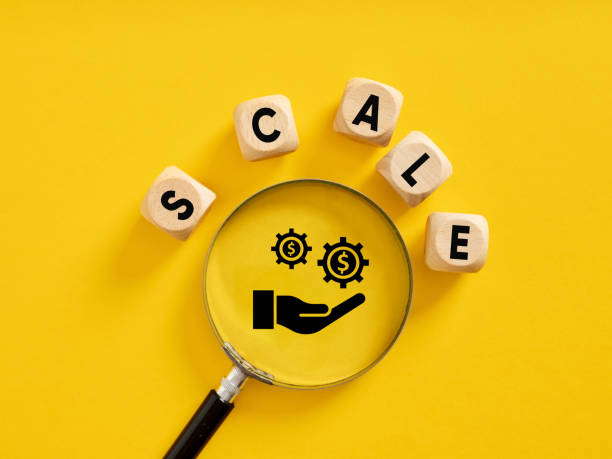
Even the best On-Page SEO strategies may face challenges.
Identifying and fixing common On-Page SEO errors is crucial for maintaining your site’s health and performance.
One of the most common errors is Duplicate Content.
This problem occurs when identical content exists on multiple different URLs, which can confuse search engines and harm your site’s credibility.
To resolve this, you can use 301 redirects, Canonical Tags, or Noindex tags.
Broken Links are another common issue that both harm user experience and are considered negative for SEO.
You should regularly check your site for broken links (internal and external) and fix or remove them.
Thin Content, meaning pages with insufficient or low-quality content, can also damage your site’s ranking.
To resolve this, you should expand the content of these pages and add more value to them, or if not needed, delete or merge them with related pages.
This is an explanatory section on how to maintain your site’s SEO.
Using tools like Google Search Console can help you identify many of these errors and maintain a sustainable On-Page SEO strategy.
Research shows that 80% of customers trust companies with professional websites more. Does your current site earn this trust?
With Rasawob’s corporate website design services, permanently solve the problem of customer distrust and a weak online image!
✅ Create a professional image and increase customer trust
✅ Attract more sales leads and business growth
⚡ Get Free Consultation!
Useful Tools for On-Page SEO Analysis
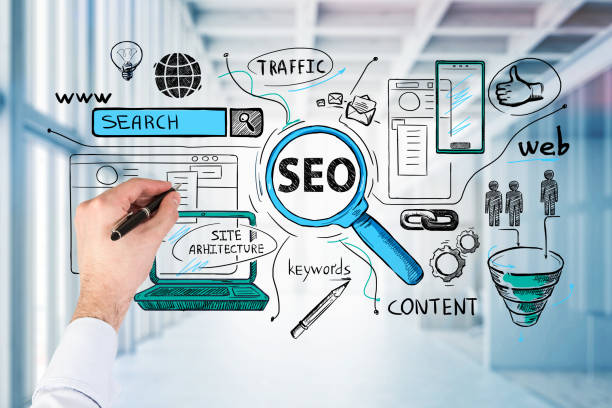
To succeed in On-Page SEO, knowledge alone is not enough; appropriate tools for implementation, monitoring, and performance analysis are also essential.
Google Search Console is one of the most essential tools, provided for free by Google.
This tool helps you monitor your site’s performance in search results, identify crawl errors, check the indexing status of pages, and see the keywords users have used to find your site.
Google Analytics is also crucial for analyzing website traffic, user behavior, and traffic sources.
This information provides valuable insights for you to optimize your On-Page SEO strategy.
Paid tools like Ahrefs, SEMrush, and Moz also offer broader functionalities for keyword research, competitor analysis, backlink checking, and site auditing, which can be very useful in a comprehensive On-Page SEO strategy.
Additionally, SEO plugins for WordPress such as Yoast SEO and Rank Math are practical tools for On-Page optimization that help you easily manage title tags, meta descriptions, and keywords.
Staying informed about the latest news on new tools and their updates can keep you at the forefront of your On-Page SEO optimization journey.
Advanced and Future On-Page SEO Strategies
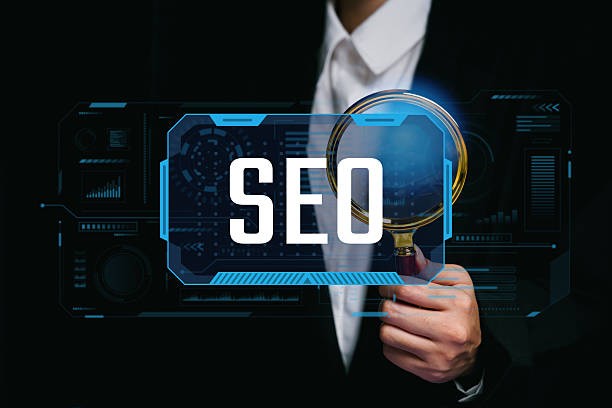
The world of SEO is constantly changing, and On-Page SEO is no exception.
To surpass competitors and maintain a high ranking in search results, special attention must be paid to advanced and forward-looking strategies.
One such strategy is Semantic SEO, which focuses on search engines’ complete understanding of the intent and meaning behind keywords and the relationships between concepts.
This means producing content that not only includes keywords but also covers a wide range of related phrases and sub-concepts to help search engines deeply understand the overall topic of your content.
Mobile SEO and optimization for voice search have also gained increasing importance.
Given the increasing use of mobile phones and smart devices, ensuring site responsiveness and optimizing content for short, direct answers often used in voice searches is crucial.
Also, holistic user experience (E-E-A-T) – encompassing Expertise, Experience, Authoritativeness, and Trustworthiness – is another important factor that Google emphasizes.
Building a reputable brand and providing high-quality, trustworthy content not only benefits users but also indirectly affects your On-Page SEO.
This is a specialized and forward-looking perspective that helps you stay on the path of progress in your On-Page SEO.
Frequently Asked Questions
| Question | Answer |
|---|---|
| What is On-page SEO? | On-page SEO refers to a set of actions performed within your website to improve its ranking in search engine results. This includes optimizing content, site structure, and HTML code. |
| Why is On-page SEO important? | On-page SEO helps search engines understand your page’s content and determine if your content is relevant to searchers. It is the foundation of any successful SEO strategy. |
| What are the key elements of On-page SEO? | Page title (Title Tag), meta description, keyword usage, image optimization, heading structure (H1, H2, …), internal linking, and content quality are key elements. |
| How to optimize the Title Tag? | The title tag should include the main keyword, be engaging and compelling for clicks, and be between 50 to 60 characters (or appropriate pixels) in length to be fully displayed in search results. |
| What is the role of Meta Description in On-page SEO? | The meta description is a summary of the page’s content displayed below the title in search results. Although it doesn’t directly affect ranking, it helps SEO by increasing the click-through rate (CTR). |
| What is the importance of using heading structure (H1, H2, H3) in On-page SEO? | Headings structure the page content and make it easier to read. H1 is usually the main page title and should include the keyword. H2 and H3 are used to organize sub-sections and help search engines understand content hierarchy. |
| How to effectively use keywords in content? | Keywords should be used naturally and logically throughout the content, including the introduction, body, and conclusion. Avoid keyword stuffing. |
| What steps are involved in optimizing images for On-page SEO? | Includes compressing images to reduce size, using descriptive file names, adding appropriate Alt Text (alternative text), and optimizing image title and description. Alt Text is crucial for accessibility and helping search engines understand image content. |
| What is Internal Linking and what are its benefits? | Internal linking means creating links from one page on your website to another page on the same website. This helps users navigate your site easily, distributes page authority across the site, and helps search engines better understand your site’s structure. |
| What is the importance of content quality in On-page SEO? | High-quality, accurate, comprehensive, and valuable content for users is the cornerstone of On-page SEO. Search engines prefer content that meets user needs. Quality content leads to more dwell time and a reduced bounce rate, which are positive SEO signals. |
And other services of Rasawob Advertising Agency in the field of advertising
Smart Social Media: A combination of creativity and technology for digital branding through precise audience targeting.
Smart Digital Advertising: A professional solution for increasing website traffic with a focus on optimizing key pages.
Smart Social Media: A creative platform for improving SEO ranking by optimizing key pages.
Smart Social Media: A professional solution for digital branding with a focus on optimizing key pages.
Smart Link Building: An exclusive service for increasing customer acquisition based on optimizing key pages.
And over hundreds of other services in the field of internet advertising, advertising consultation, and organizational solutions.
Internet Advertising | Advertising Strategy | Advertorials
Resources
On-Page SEO Tutorial
What is On-Page SEO?
On-Page SEO and Off-Page SEO
Comprehensive On-Page SEO Guide
📍 Rasawob Afarin Digital Marketing Agency specializes in elevating your business in the online space. From fast website design and professional services to SEO optimization and advertising campaign management, we pave the way for your digital success.
📍 Tehran, Mirdamad Street, Next to Central Bank, Southern Kazeroun Alley, Ramin Alley, No. 6

